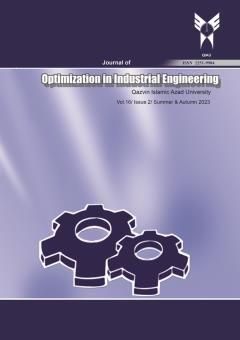Financial Health Analysis on PT Asuransi LMIGNKG Based on Premium Reserve Calculation
محورهای موضوعی : Financial engineering
1 - Vocational Education Program, Universitas Indonesia
کلید واژه: insurance company, FSA, RBC, investment,
چکیده مقاله :
An insurance company's state of financial stability is crucial. This is required to guarantee that, if an event specified in the policy occurs, the insurance provider will be able to compensate the insured. The Financial Services Authority (FSA) in Indonesia oversees the sound financial standing of insurance companies which are Risk Based Capital (RBC), technical reserves, investment sufficiency, equity, guarantee funds, and other provisions are the metrics. The purpose of this study is to assess PT Asuransi LMIGNKG's financial situation in 2022. The research is limited to using secondary data from the company, which was utilized to determine financial health based on investment adequacy, RBC, and premium reserves. This research showed the RBC calculation is 402 % which still exceeds the 120% limit set by the regulator. PT Asuransi LMIGNKG's investment adequacy ratio is also quite large, namely 8 times compared to its technical reserves. In managing investments, PT Asuransi LMIGNKG also does not violate these rules. PT Asuransi LMIGNKG's investment management is still below regulatory limits. From these indicators, it can be said that PT Asuransi LMIGNKG is a general insurance company whose financial condition is healthy.
An insurance company's state of financial stability is crucial. This is required to guarantee that, if an event specified in the policy occurs, the insurance provider will be able to compensate the insured. The Financial Services Authority (FSA) in Indonesia oversees the sound financial standing of insurance companies which are Risk Based Capital (RBC), technical reserves, investment sufficiency, equity, guarantee funds, and other provisions are the metrics. The purpose of this study is to assess PT Asuransi LMIGNKG's financial situation in 2022. The research is limited to using secondary data from the company, which was utilized to determine financial health based on investment adequacy, RBC, and premium reserves. This research showed the RBC calculation is 402 % which still exceeds the 120% limit set by the regulator. PT Asuransi LMIGNKG's investment adequacy ratio is also quite large, namely 8 times compared to its technical reserves. In managing investments, PT Asuransi LMIGNKG also does not violate these rules. PT Asuransi LMIGNKG's investment management is still below regulatory limits. From these indicators, it can be said that PT Asuransi LMIGNKG is a general insurance company whose financial condition is healthy.
Abdurahim, Ahim, and Rezki Setiawan. 2021. “Comparison of the Accuracy of the Risk-Based Capital and Early Warning System Method in Assessing the Financial Performance of Sharia Life Insurance.” Proceedings of the 4th International Conference on Sustainable Innovation 2020-Accounting and Management (ICoSIAMS 2020) 176(ICoSIAMS 2020): 191–98.
Anastasya Prionggo, Echa, Mohammad Nabil Pratama, Amandaputri NL, and Fajar Indrayatna. 2022. “Estimation of Prospective Benefit Reserve Based on Gross Premium Valuation Method Using Indonesian Mortality Table IV and De-Moivre Assumptions.” Enthusiastic : International Journal of Applied Statistics and Data Science 2(2): 56–67.
Cafasso, Pietro Angelo Lioi, João Luiz Chela, and Herbert Kimura. 2018. “Market Risk Based Capital for Brazilian Insurance Companies: A Stochastic Approach☆.” Future Business Journal 4(2): 206–18. https://doi.org/10.1016/j.fbj.2018.06.005.
Cummins, J. David, Scott E. Harrington, and Robert Klein. 1995. “Insolvency Experience, Risk-Based Capital, and Prompt Corrective Action in Property-Liability Insurance.” Journal of Banking and Finance 19(3–4): 511–27.
Dani, Harma, Jumawan Jasman, and Asriany. 2023. “Pengaruh Pendapatan Premi, Hasil Underwriting, RBC, RKI Terhadap Kinerja Keuangan Secara Islami Pada Perusahaan Asuransi.” Jurnal Ekonomi dan Bisnis Islam 7(1): 197–214.
Dickinson, G M. 1997. “Some Issues in Risk-Based Capital.” 22(82): 76–85.
Hudakova, Monika, and Jozef Adamko. 2017. “Technical Reserves in Insurance and Slovak Insurance Market.” Economic Annals-XXI 162(11–12): 98–103.
Jacques, Kevin, and Peter Nigro. 1997. “Risk-Based Capital, Portfolio Risk, and Bank Capital: A Simultaneous Equations Approach.” Journal of Economics and Business 49(6): 533–47.
Markets, Developing Insurance. “DEVELOPING INSURANCE MARKETS WHY RISK-BASED CAPITAL REFORM WORKS BETTER THAN NOMINAL CAPITAL INCREASES ?”
Mwangi, Mirie, and Jane Wanjugu Murigu. 2015. “The Determinants of Financial Performance in General Insurance Companies in Kenya.” European Scientific Journal 11(1): 288–97.
Nurfadila, Sindu, R.R Hidayat, and Sri Sulasmiyati. 2015. “ANALISIS RASIO KEUANGAN DAN RISK BASED CAPITAL UNTUK MENILAI KINERJA KEUANGAN PERUSAHAAN ASURANSI (Studi Pada PT. Asei Reasuransi Indonesia (Persero) Periode 2011-2013).” Jurnal Administrasi Bisnis 22(1): 1–9.
Otoritas Jasa Keuangan (OJK). 2016. “Peraturan Otoritas Jasa Keuangan Nomor 71 /POJK.05/2016 Tentang Kesehatan Keuangan Perusahaan Asuransi Dan Perusahaan Reasuransi.” Pojk: 50.
Presiden RI. 2014. “UU RI No.40 Tahun 2014 Tentang Perasuransian.” Www.Ojk.Go.Id: 1–46. https://www.ojk.go.id/Files/201506/1UU402014Perasuransian_1433758676.pdf.
Siregar, Reza Yamora, Rosi Melati, and Nada Serpina. 2022. “Asuransi Umum Kondisi Dan Tantangan.” Indonesia Financial Group (IFG) (5).


